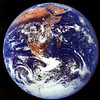
"While I have no doubt that lovesickness is common, I am increasingly concerned about the continuing trend of defining mental health problems with terms that do not correlate to the underlying neurobiology of the illness. Broad, top down descriptions of psychiatric conditions like this that are defined primarily via evaluation of externally observed symptoms confuse rather that improve accurate diagnosis and treatment." -- ZL
Love is Like an Addiction (The Scientist, registration)
Looking for correlates in human and animal attraction; Neuroscientists today are peering into the brain to understand the drive of romantic love, and they are finding evidence backing the 19th-century philosopher's observation: Love has a striking neural kinship with drug addiction.
Inventor Sets His Sights on Immortality (MSNBC)
Futurist Ray Kurzweil believes that nanotechnology will spark a longevity breakthrough in as little as 20 years.
Please Don't Call the Customers Dead (NY Times)
The live-in customers at the Alcor Life Extension Foundation here reside in eight 10-foot-high steel tanks filled with liquid nitrogen. They are incapable of breathing, thinking, walking, riding a bike or scratching an itch. But don't refer to them as deceased.
Human Factors in Commercial Suborbital Flight (The Space Review)
A key question for many new space ventures is how to deal with the regulatory and medical issues associated with human spaceflight. Dr. John Jurist looks at how space tourism companies may look to the medical field when dealing with risk assumption.
Domo Arigato, Doctor Roboto (Technology Review)
Hospitals across the country are examining whether video-enabled robots can help doctors extend their rounds safely and with patients’ acceptance.
What sort of patterns do scientists working on the Search for Extraterrestrial Intelligence (SETI) project look for? (SciAm)
Life Might Have Started in Fresh Water (Universe Today)
By tracing back the family tree of cyanobacteria, a researcher from Washington University in St. Louis believes these tiny organisms began life in fresh water, not salt water as most biologists theorized. Cyanobacteria use light, water and carbon dioxide to produce oxygen and biomass, and they probably got their start 2 billion years ago in fresh water, and then evolved to survive in saltier environments.
Genetic 'Doping' an Imminent Problem (Red Nova)
How To Talk When You Can't Speak (Slate)
Communicating with unconscious minds.

No comments:
Post a Comment